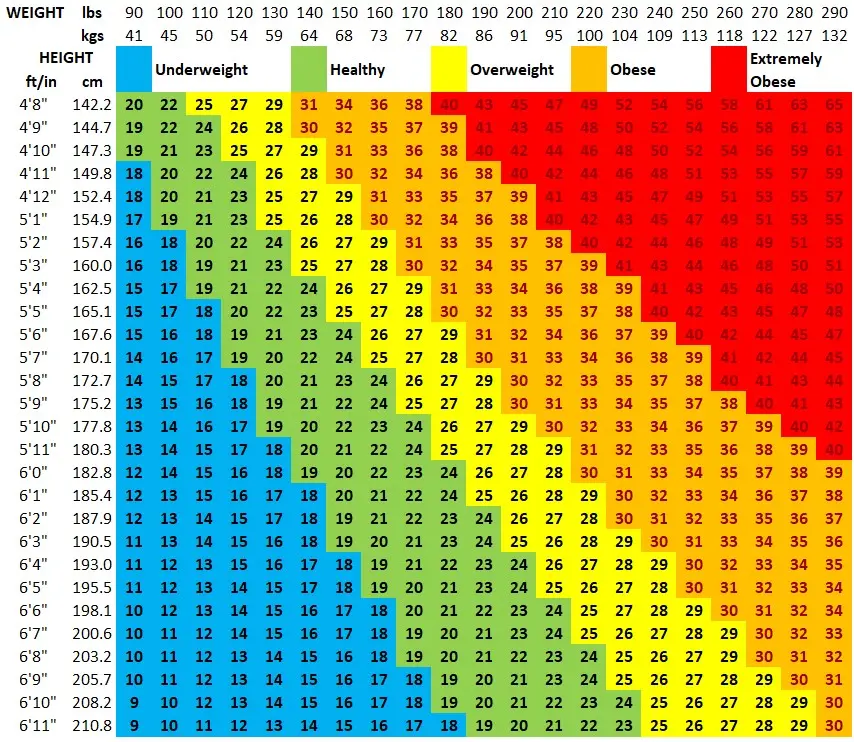Imagine you’re planning a road trip, and you want to make sure your car is in good shape for the journey.
You check the tire pressure, oil level, and fuel efficiency, but there’s one crucial piece of information you’re missing: the odometer reading.
Without knowing how many miles are already on the car, it’s difficult to gauge its overall condition and plan for necessary maintenance.
Just like an odometer for a car, your Body Mass Index (BMI) serves as a valuable indicator of your overall health and weight status.
It’s a simple calculation that takes your height and weight into account, providing a snapshot of whether you fall within a healthy range or if you may be at risk for weight-related health issues.
While BMI isn’t a perfect measure, it’s a widely used screening tool that can help you understand your current situation and make informed decisions about your health and fitness goals.
Calculating your BMI is like checking the odometer before embarking on a journey towards a healthier lifestyle.
In this article, we’ll explore what BMI is, how it’s calculated, and why it’s an important metric to consider.
We’ll also provide an interactive BMI calculator, so you can easily determine your own BMI and understand what it means for your overall well-being.
How is BMI Calculated?
But first, how is BMI calculated?
Body Mass Index (BMI) is a simple calculation using a person’s weight and height. It is obtained by dividing a person’s weight in kilograms by the square of their height in meters:
BMI = Weight (kg) / [Height (m)]2
For example, if someone weighs 70kg and is 1.75m tall, their BMI would be:
BMI = 70kg / (1.75m)2 = 70kg / 3.0625m2 = 22.9 kg/m2
The metric formula is the standard, but BMI can also be calculated using pounds and inches:
BMI = Weight (lbs) x 703 / [Height (in)]2
BMI Ranges and Categories
The resulting BMI value is then used to categorize if a person is underweight, normal weight, overweight or obese:
- Underweight: BMI < 18.5
- Normal Weight: BMI 18.5 – 24.9
- Overweight: BMI 25 – 29.9
- Obese: BMI ≥ 30
These BMI categories are the same for both men and women of all body types and ages. However, some exceptions apply for athletes and muscular individuals who may fall into the overweight category due to higher muscle mass.
BMI Calculator
BMI Calculator Table

Is BMI for Children and Adults the same?
While the basic calculation for Body Mass Index (BMI) remains the same, the interpretation and categorization of BMI values differ between children and adults.
For adults aged 20 and older, BMI values are interpreted using the above categories. These ranges are the same for both men and women and are based on the association between BMI and body fat, as well as the risk of developing weight-related health conditions.
BMI for Children and Teens
In contrast, BMI for children and teenagers (aged 2 to 19 years) is interpreted using percentile ranges based on age and sex. This is because children are constantly growing, and their body composition changes as they age.
Instead of using fixed BMI categories, a child’s BMI is plotted on growth charts from the Centers for Disease Control and Prevention (CDC) to determine their BMI percentile rank relative to other children of the same age and sex.
The percentile ranges for children and teens are as follows:
- Underweight: BMI less than the 5th percentile
- Healthy Weight: BMI between the 5th and 85th percentiles
- Overweight: BMI between the 85th and 95th percentiles
- Obese: BMI at or above the 95th percentile
These percentile ranges account for the natural variations in growth and development during childhood and adolescence, providing a more accurate assessment of a child’s weight status compared to their peers.
Are there Limitations to the BMI Calculator?
While BMI is a widely used and valuable screening tool, it does have some key limitations:
- It does not distinguish between fat mass and lean mass like muscle. Someone with a higher muscle composition may have an overweight BMI but still have a healthy body fat percentage.
- It does not account for fat distribution. Individuals with excess abdominal fat are at higher risk even with a normal BMI.
- There can be variations across ethnic groups in how BMI relates to body fat and disease risk.
- BMI may be an inaccurate measure for certain populations like the elderly, very muscular, or pregnant women.
So while BMI is a useful initial indicator, it should be considered along with other health assessments like skinfold measurements, waist circumference, and risk factors. A high BMI warrants further evaluation, but a normal BMI does not necessarily mean an individual has no health risks.
Read More Articles Here:
Breakfast, Lunch & Dinner: Fantastic 100 Calorie Cutting Made Easy
How to Calculate How Much Calories You Need A Day



